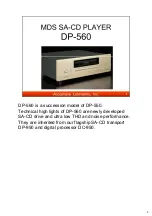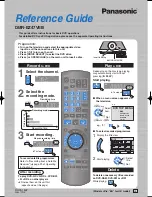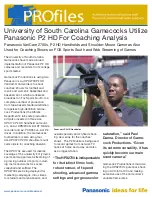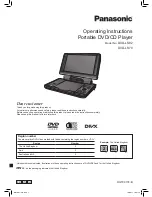
Page 17
6.3.3.
Observed folder sequence during navigation
If you are using the same memory card for the two applications “voice recorder with a
memory card” and “MP3 player” then in addition to the MP3 files which you transferred from
the computer to the memory card you will also find the five folders from the “voice recorder
with a memory card” application on the memory card. These folders are named M1 to M5.
If you have generated additional folders on the memory card via computer then the MP3
player will access all existing folders in alphabetical order. Example: you have created the
folders “Beethoven”, “Haydn” and “Strauss” and you have not yet voice labelled them
using Milestone 311. The folders on the memory card will now be accessed in the following
order: “Beethoven” as “Folder 1”, “Haydn” as “Folder 2”, “M1” to “M5” as “Folder3” to
“Folder 7” and “Strauss” as “Folder 8”. In order for you to keep track of the folders we
recommend that you voice label them right after you disconnect Milestone 311 from the
computer (see below).
You may create as deep a folder and subfolder structure as you like. At the highest level
(root directory) Microsoft’s data system limits the number of folders/files to 512. Within
subfolders the number of folders/files is not limited. The sequence of play of folders and
files is alphabetical with all folders played before the files.
6.4.
Voice labelling of folders
To change the voice label of a folder the two-button combination of “Selector” button and
“Rec” button has to be kept pressed down for recording. Recording starts after a safety
interval of four seconds and ends when the buttons are released. The device signals start
of recording with the sound sequence “low pitched-high pitched” and end of recording with
the sound sequence “high pitched-low pitched”. This new voice label is heard the next time
the folder is selected.
The recorded voice label is discarded if it is shorter than 0.5 seconds and the old voice label
will remain. A voice label may be changed at any time by recording a new one. To
completely remove a self recorded voice label and to restore the original label of “1” to “5”
you need to delete the file “FOLDER.NAM” within the given folder via the computer.
7.
DAISY player
7.1.
What is a Daisy book?
The abbreviation Daisy stands for "Digital Accessible Information System". A Daisy book is
an audio
book, which is additionally equipped with indications to its structure, e.g. chapters
or page numbers. Unlike mere audio books Daisy allows efficient navigation with the
accessory available information on its structure.
Daisy stands for a world-wide standard with the aim to allow easy acoustical access to
traditional printed information by maintaining its structure and allowing cross platform access
irrespective of the type of playbacking device (table device, portable device or PC).
Milestone 311 Daisy disposes of an integrated Daisy functionality that allows the easy
charging of Daisy books as well as the easy navigation of structure information.













































